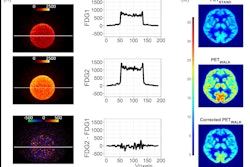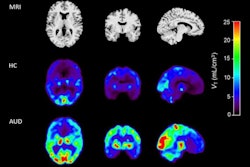A group led by researchers at the University of Arizona has received a $4 million grant from the National Institutes of Health (NIH) to develop multitracer brain PET imaging technology.
The technology could allow clinicians to detect multiple biomarkers at once and improve the spatial resolution of brain imaging for applications in cancer as well as neurodegenerative disease, according to principal investigator Lars Furenlid, PhD, a professor of medical imaging at the University of Arizona.
In PET imaging, radiotracers that bind to specific disease targets are injected into the body and detected by PET cameras as the tracers release gamma photons. To date, it has not been possible detect multiple biomarkers at the same time because the positron signals are emitted at the same frequency and cannot be distinguished from each other.
The group’s technology aims to overcome this limitation by taking advantage of prompt gamma signals in addition to the positron signals. Prompt gamma signals are a second type of signal that can be detected through sophisticated PET imaging, making it possible to trace multiple biomarkers with one PET scan.
Collaborators on the five-year project include Shiva Abbaszadeh, PhD, of the University of California, Santa Cruz; Michael King, PhD, of the University of Massachusetts Chan Medical School; and Phillip Kuo, MD, PhD, and Matthew Kupinski, PhD, of the University of Arizona.




















